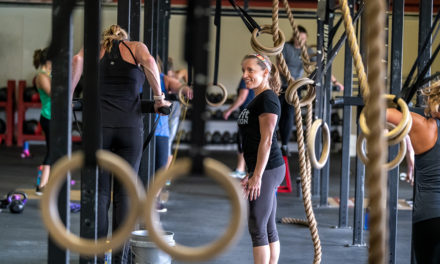Think the typical gym weight room is home to a bunch of grunting meatheads loudly dropping barbells and tearing into energy bars between sets? That’s so ’80s. Walk into a modern day weight room and you’ll see women of all ages and levels of fitness lifting, curling, and squatting—in fact, according to the 2014 International Health, Racquet & Sportsclub Association, 33 percent of female gym members use weight machines, making it more popular than yoga, tennis, or even the elliptical machine. Add to that the soaring popularity of body weight-based workouts like CrossFit, boot camps, and cardio-pump classes, all capable of transforming bodies in a relatively short amount of time, and it’s clear that women are catching on to the message that strength training offers major benefits far beyond First Lady arms.
A Powerful Workout
Clearly aesthetics are a driving force behind many workout programs, and there’s no shame in that. But while most weight-conscious women, given a limited window of time, would opt for cardio over weights, the latter offers oodles more bang for the buck when it comes to sculpting one’s figure. “Cardio is essential for a healthy heart, and women like it because they sweat more, so it feels like a better workout, but cardio alone will not tone you,” says Jenny Stover, director of Group Exercise Programming at the New Jersey Athletic Club in Lawrenceville, N.J. “Strength training is how you get the physique you want. You can do all the cardio in the world, but if you don’t pick up weights, you won’t have any shape to your body.”
When you do pick up those weights, magic happens. While fat burns practically nothing, muscle torches 4.5 to 7 calories per pound of muscle every day, explains Certified Strength and Conditioning Specialist Pete McCall, a past exercise physiologist with the American Council on Exercise. That means if a 150-pound woman replaced 5 percent of her body fat with 5 to 7 pounds of muscle, she would burn an additional 23-53 calories per day—up to 1600 calories per month—and that’s at rest.
Beyond a faster metabolism and sleeker profile, weight lifting boosts bone density by forcing your skeleton to work harder against gravity. In one study, women age 44-66 were divided into strength-training or non-strength-training groups. After one year, the weight lifters fortified their bone density by 2 percent—and maintained it for four years—while the non-lifting group lost a half percent.
All that hoisting and pressing also comes in handy for alleviating anxiety; some studies suggest that lifting weights might lift depression, and research published in the American Journal of Lifestyle Medicine found that resistance training reduces symptoms of generalized anxiety disorder, perhaps by enhancing central nervous system functioning.
Fight the Fear Factor
Once you’re sold on the idea of lifting, you may have to overcome a few obstacles that often keep women from picking up a barbell. First, rest assured you will not bulk up like Ahh-nold. “Women simply don’t have enough testosterone for that to happen,” Stover promises. Next, intimidation: Many women feel daunted by the notion of entering such a stereotypically male-dominated arena. But the male-to-female ratio truly is changing. Stover also suggests dipping your toes in via group fitness classes like BODYPUMP™, which marries cardio with high reps of light weights in movements for the shoulders, chest, back, legs, and abs. “An instructor will guide you and check your form, and there are other people struggling and improving alongside you.” You could also sign up for a personal training session for guidance in designing a routine, instruction in how to use the machines or free weights, and advice on proper form, which will reduce your risk of injury. Or grab a buddy and start training together; bonus points if she has weight room experience.
In terms of equipment, Stover recommends starting with machines. “Machines are no-fail. Just pick the appropriate weight, and the machine will keep you in alignment and in the proper range of motion.” Free weights require more specialized technique to avoid harmful jerking or thrusting motions.
Like any workout, weight lifting is just one component of a well-rounded fitness routine. It’s not a panacea—you can’t spot-reduce, for instance, and it’s easy to skip heavier weights in favor of a more relaxed routine, which will slow your progress—but done properly and combined with regular cardio, you will see a change in your body.
Try this four-move strength-training regimen for stellar results.










